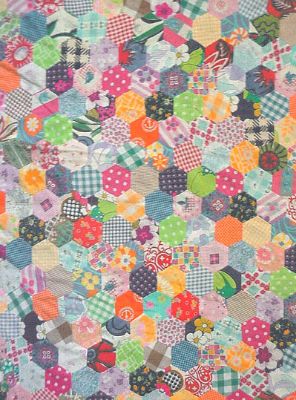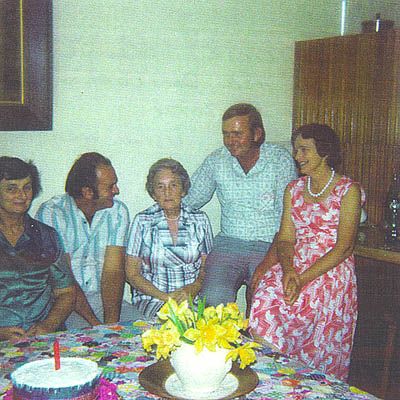Quilt No.1044JW - Julie White

The quilt was commenced in 1969 by Anneliese Goerling in Perth WA. It is now owned by Julie White. It is not used.
"Maker was born in Kassel, Germany on 26.2.1903 into a well-to-do family. Her husband, German by descent but born in Victoria, met her in Germany. After their marriage they came to Australia where they owned Marloo Station in the Murchison district of WA. Heinrich's family were all interested in hobbies, particularly photography. Heinrich enjoyed cine photography and some of his film of station life in the outback is now in film archives. The couple had four daughters before moving to Pinjarra in 1933 where they farmed cattle and sheep until Heinrich's death in 1946. Anneliese, now with seven children, continued on the farm as best she could by share farming. After selling the 1000 acre farm to Alcoa in 1969, Anneliese began making the quilt in suburban Booragoon. Anneliese had always enjoyed dressmaking for her children and grand-children so making a quilt was a creative activity to help bridge the gap from farm to suburban house - and it was a good way to use some of the dress-making scraps she had always saved. She later bought a knitting machine which she used a lot. Anneliese also sewed many stamped tapestries which gave her the feeling that she was painting. She began that hobby at the age of about 70 and continued making about 80 tapestries until she was about 90 not long prior to her death on 25.3.2000. [Julie White]

Related Quilts:
2510 x 1850mm
1350 x 148mm
2650 x 2475 mm
2050 x 1530mm
2400 x 1780mm.






